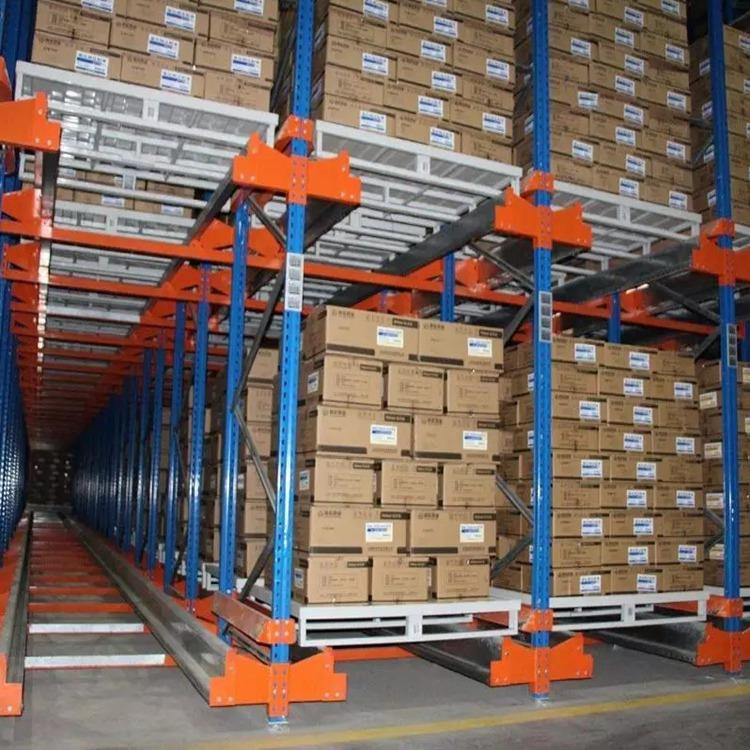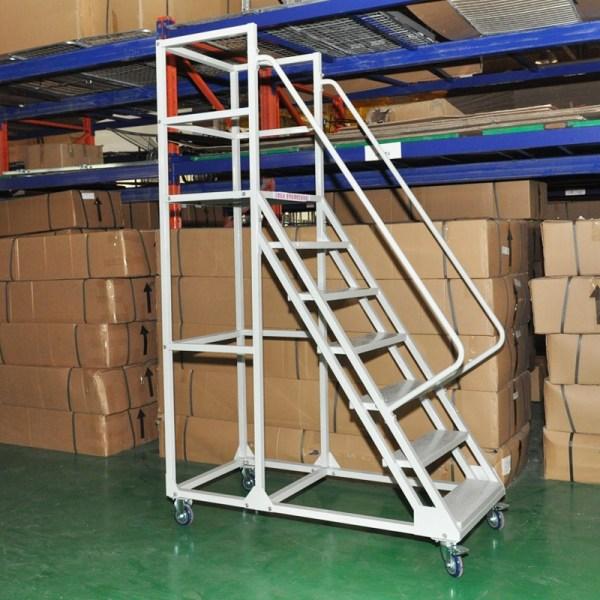Are you constantly battling space constraints in your warehouse, struggling to keep up with growing inventory demands? If so, you're not alone. Many businesses face the challenge of maximizing storage without expanding their footprint. This is where high bay storage racks come into play—a versatile and efficient solution that transforms vertical space into a powerhouse of organization. In this article, we'll dive into the essentials of high bay storage racks, uncovering how they can revolutionize your storage operations. From boosting capacity to enhancing safety, we'll explore multiple facets that make these systems a game-changer for industries worldwide. Whether you're in logistics, manufacturing, or retail, understanding the ins and outs of high bay storage racks can lead to significant improvements in efficiency and cost-effectiveness. So, let's get started and see why these racks are becoming a staple in modern warehousing.

High bay storage racks are specialized shelving systems designed to utilize vertical space in warehouses and storage facilities, typically reaching heights of 30 feet or more. Unlike conventional storage solutions, these racks are engineered for high-density storage, allowing businesses to store goods in multiple tiers. They are commonly constructed from durable materials like steel, ensuring they can handle heavy loads and withstand the rigors of daily operations. The design often includes features such as adjustable beams and pallet supports, making them adaptable to various item sizes and weights. High bay storage racks are ideal for environments where floor space is limited but inventory volume is high, such as distribution centers and manufacturing plants. By going vertical, these systems help organizations optimize their storage layout, reduce clutter, and improve overall workflow. Essentially, high bay storage racks turn unused overhead space into valuable real estate, enabling better inventory management and faster retrieval times.
One of the primary advantages of high bay storage racks is their ability to maximize storage capacity without requiring additional floor space. By building upward, businesses can double or even triple their storage area, which is especially beneficial in urban settings where land costs are high. This vertical approach not only saves money on real estate but also reduces the need for costly expansions. Additionally, high bay storage racks enhance organizational efficiency by providing clear, accessible storage lanes that streamline inventory tracking and picking processes. This leads to faster order fulfillment and lower labor costs. Another significant benefit is improved safety; these racks are designed with stability in mind, incorporating features like guardrails and secure anchoring to prevent accidents. Moreover, high bay storage racks support better inventory rotation through systems like FIFO (First-In, First-Out), which is crucial for perishable goods or time-sensitive products. Overall, investing in high bay storage racks can result in long-term savings, increased productivity, and a more resilient supply chain.
High bay storage racks come in various types and designs to suit different storage needs and environments. The most common include selective pallet racks, which allow direct access to each pallet and are ideal for high-turnover inventory. Then there are drive-in or drive-through racks, where forklifts can enter the rack structure to store and retrieve pallets, making them perfect for high-density storage of similar products. Another popular design is the push-back rack system, which uses a series of nested carts to store multiple pallets deep, offering a balance between density and accessibility. For lighter loads, mobile high bay storage racks on tracks can be shifted to create aisles only when needed, further optimizing space. Each design incorporates robust materials and engineering to handle heavy weights and dynamic loads, ensuring durability in demanding conditions. When selecting high bay storage racks, factors like load capacity, aisle width, and compatibility with handling equipment must be considered to achieve the best fit for your operations. Customization options, such as adjustable heights and specialized coatings for corrosion resistance, make these systems versatile across industries.
High bay storage racks are widely used across multiple industries due to their versatility and efficiency. In the logistics and distribution sector, they enable large-scale storage of goods in fulfillment centers, facilitating quick sorting and shipping. Manufacturing plants rely on high bay storage racks to store raw materials and finished products, ensuring smooth production lines and just-in-time inventory management. The retail industry benefits from these racks in back-of-house areas, where they help manage seasonal stock and bulk items without cluttering sales floors. In cold storage facilities, high bay storage racks are essential for organizing frozen or refrigerated goods, as their design allows for efficient air circulation and temperature control. Even in sectors like automotive and aerospace, where parts are often bulky and numerous, these racks provide a structured way to store components safely. By adapting to industry-specific needs, high bay storage racks support operational scalability and help businesses respond to market demands more effectively.
Proper installation and maintenance are crucial for the safe and efficient operation of high bay storage racks. Installation typically involves a thorough assessment of the warehouse layout, including floor conditions, ceiling height, and load-bearing capacities. It's recommended to work with professional installers who can ensure that the racks are securely anchored and aligned according to manufacturer specifications. Regular maintenance includes inspections for signs of wear, such as bent beams or loose connections, which could compromise stability. Cleaning and lubricating moving parts, like in mobile systems, also help prolong the lifespan of high bay storage racks. Additionally, training staff on proper usage—such as weight limits and safe loading techniques—can prevent accidents and damage. Implementing a scheduled maintenance plan not only reduces downtime but also ensures compliance with safety regulations. Over time, upgrades or reconfigurations might be needed to adapt to changing storage needs, making flexibility a key factor in long-term success with high bay storage racks.

Safety is a top priority when using high bay storage racks, as improper use can lead to collapses or injuries. Key safety features include load beams with locking mechanisms, column guards to protect against impacts, and anti-tip devices that secure the racks to the floor. Many systems also incorporate pallet supports and back braces to distribute weight evenly and prevent overloading. Best practices for using high bay storage racks involve conducting regular risk assessments, ensuring loads are within specified limits, and maintaining clear aisles for easy access. Employees should be trained on emergency procedures and the use of personal protective equipment when working at heights. It's also important to monitor for environmental factors, such as seismic activity or high winds, which might require additional reinforcements. By adhering to these guidelines, businesses can minimize risks and create a safer workplace, ultimately protecting both personnel and assets.
Investing in high bay storage racks can yield a strong return on investment (ROI) through space savings and operational efficiencies. Initially, the cost may include purchasing the racks, installation, and any necessary modifications to the facility. However, the long-term benefits often outweigh these expenses. For instance, by maximizing vertical space, businesses can avoid the high costs of relocating or expanding their premises. High bay storage racks also reduce labor costs by speeding up inventory processes and minimizing errors in picking and stocking. Moreover, their durability means lower replacement and repair costs over time. To calculate ROI, consider factors like increased storage capacity, reduced waste, and improved inventory turnover rates. Many companies find that high bay storage racks pay for themselves within a few years through enhanced productivity and better resource utilization. In a competitive market, this investment can provide a significant edge by enabling scalable growth and adaptability.
In conclusion, high bay storage racks offer a robust solution for modern storage challenges, combining space efficiency, safety, and versatility. By understanding their benefits, types, applications, and maintenance needs, businesses can make informed decisions that drive operational success. As you evaluate your storage options, remember that high bay storage racks are more than just shelving—they're a strategic asset that can transform your warehouse into a highly functional environment.
Q1: What is the typical height range for high bay storage racks?
A1: High bay storage racks typically range from 30 to 100 feet in height, depending on the warehouse's ceiling clearance and structural support. This allows businesses to make the most of vertical space while ensuring stability and safety.
Q2: How much weight can high bay storage racks support?
A2: The weight capacity of high bay storage racks varies based on design and materials, but they can generally handle loads from 1,000 to 10,000 pounds per level. It's essential to consult manufacturer specifications and conduct load tests to avoid overloading.
Q3: Are high bay storage racks suitable for cold storage environments?
A3: Yes, high bay storage racks are often used in cold storage facilities because they can be designed with materials that resist corrosion and maintain structural integrity in low temperatures, while also allowing for efficient air flow.
Q4: What maintenance is required for high bay storage racks?
A4: Regular maintenance includes visual inspections for damage, tightening of bolts and connections, and cleaning of components. It's advisable to schedule professional audits annually to ensure compliance with safety standards.
Q5: Can high bay storage racks be customized for specific needs?
A5: Absolutely, high bay storage racks can be customized in terms of height, width, load capacity, and accessories like dividers or special coatings. This flexibility makes them adaptable to various industries and storage requirements.
 Wechat
Wechat
 Whatsapp
Whatsapp